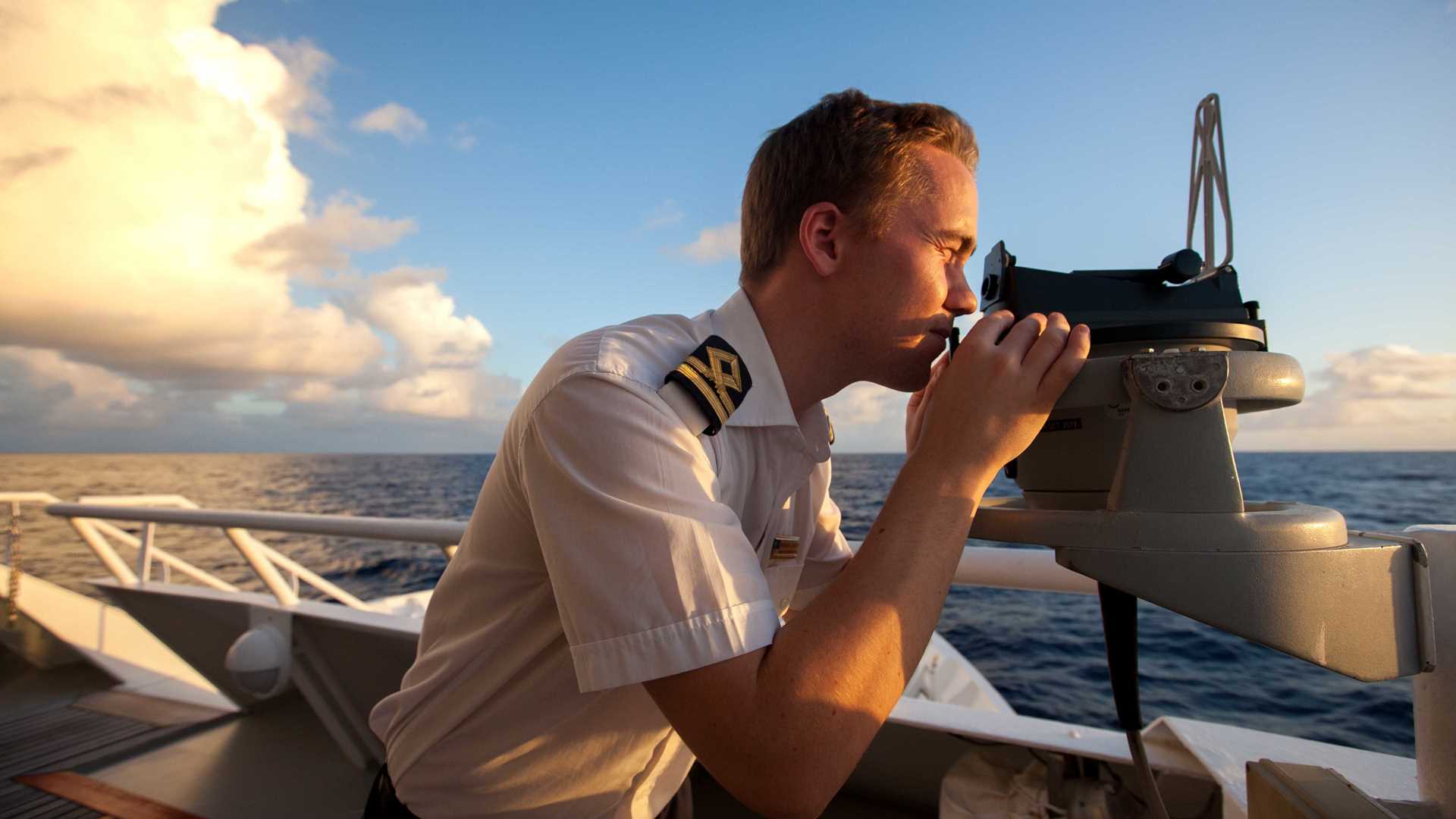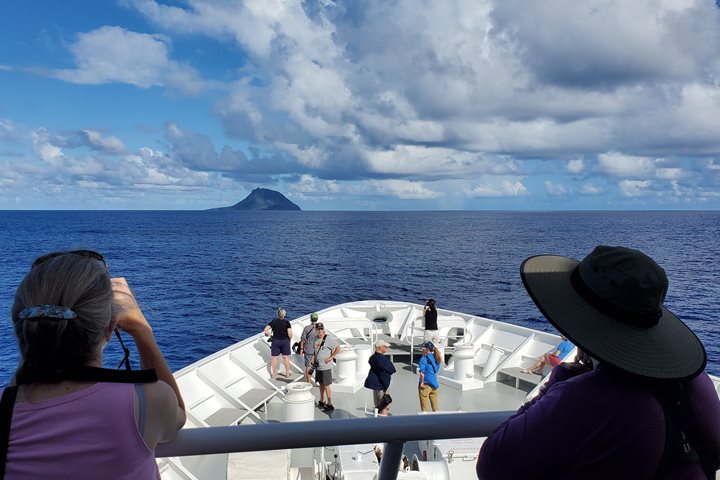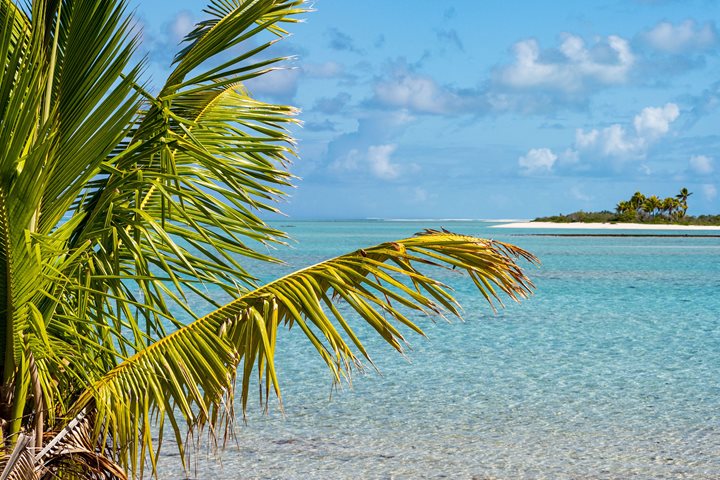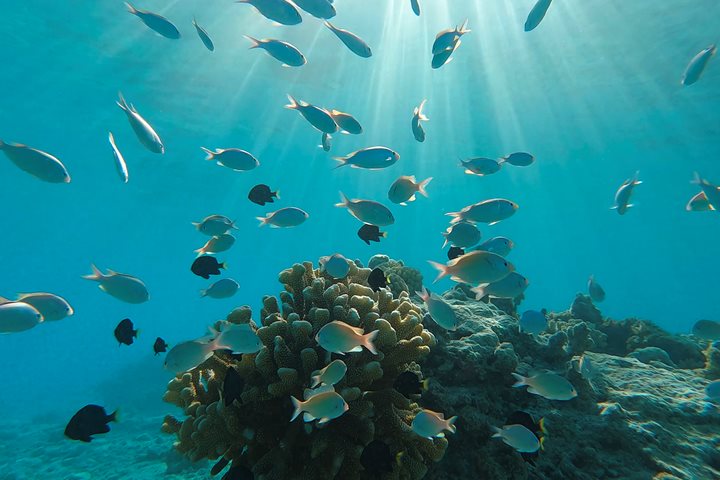The guests aboard National Geographic Orion woke up slowly this morning, gently rocked by a mellow sea. With fair winds, riding with the swell, the ship was on a long journey from the Marquesas Islands back to the Tuamotus.
French Polynesia is comprised of five different island archipelagos, two of which will be visited on this expedition. The differences between the regions are staggering, from aspects of geology to social structure. The Tuamotus have eroded in the last 60-80 million years of their existence, evolving in their topography from volcanic islands into atolls, fringed by reef. This process is called subsidence, the sinking of land into the sea. The Marquesas are still in their infancy geologically. At only 3 million years old, they still stand tall and wide. They do not boast full coral reefs, but instead sport steep rocky cliffs which plunge deep into the sea. Sea creatures here enjoy productive waters due to upwelling events, slightly colder temperatures, and healthy feeding grounds. Marquesan culture is full of folklore and strength. The people in these islands are rich in community and spirit, with respect for the land, families, and each other. Today’s people are descendants of the fierce warriors of the past. The Tuamotus have a much more modest history as a civilization group, with significantly less war between islands.
It is quite the luxury to be able to not only travel from one archipelago to the other, but also back again. As the ship steams towards tomorrow’s early destination, folks onboard are editing photos, listening to informative lectures, or taking time to relax in the open air. The expedition team is found sighting wildlife from the bridge, on the bow, or from the stern. The video chronicler composes his many hours of video footage into a brief sample of the fantastic journey, cape donned to create magic. The ship moves south into the night, preparing for another day of adventure and exploration.







